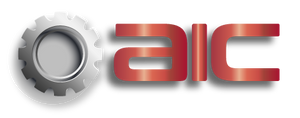Snow plows are the unsung heroes of the winter, working nonstop to clear driveways and roadways of snow and ice as the cold weather sets in. But the constant work wears down the machinery, with some parts experiencing more abrasion than others. Wear bars and skid shoes stand out among these essential parts as the unsung heroes of snow plow maintenance. In this blog post, we'll examine the critical functions of wear bars and skid shoes and emphasize how important they are to maintaining the durability and effectiveness of snow plows.
Gaining Knowledge of Skid Shoes: The Basis for Snow Plow Stability
Skid shoes, sometimes referred to as skid plates or runners, are crucial parts that are placed on a snowplow blade's lower edges. These parts act as the plow's main point of contact with the earth, giving it stability and regulating how high it is above the surface. Their well-planned positioning keeps the blade from piercing through the pavement or harming subsurface materials like gravel driveways.
Skid shoes wear down over time as a result of constant friction with different surfaces, which affects how well they maintain the desired height and guard against damage. To guarantee optimum performance and prevent possible surface damage, routine inspections and prompt replacement of skid shoes are essential components of snow plow maintenance.
Wear bars' functions include safeguarding the blade and boosting productivity.
Wear bars are another essential component of a snow plow's construction. They are also referred to as cutting edges or scraper blades. Wear bars, which are positioned along the plow blade's lower edge, are essential for cutting through solid snow and ice, ensuring a thorough sweep, and reducing damage to the blade itself.
Wear bars are made to withstand a great deal of wear and tear, as their name implies. But over time, especially when dealing with the rough surface of ice-covered roads and surfaces, their effectiveness wanes. The effectiveness of the snow plow depends on routinely checking the wear bars and replacing them when necessary. This ensures that the plow can continue to cut through snow without causing unnecessary strain on the entire system.
Wear and Tear's Effect on Snow Plow Efficiency
A snow plow's overall effectiveness and performance are directly impacted by the wear and tear on its skid shoes and wear bars. The plow blade may become less able to adjust its height as a result of worn-out skid shoes, which could cause uneven snow removal and possibly damage to the plow or the surface being cleared. In addition to increasing resistance, uneven blade height can also strain the plow's hydraulic system.
In a similar vein, worn wear bars make it harder for the plow to efficiently chop through snow. This may result in ineffective snow removal that needs more than one pass to get the desired effect and leaves behind a layer of snow or ice. Inefficient cutting not only increases the workload but also reduces fuel efficiency and may contribute to premature wear of other plow components.
Wear Indications and When to Change Your Skid Shoes and Wear Bars
Being aware of the wear indicators on wear bars and skid shoes is essential for preventative maintenance. Here are a few signs that it's time to think about replacing:
Diminished Blade Height Control: Worn skid shoes may be the cause if you observe that the plow blade is not staying at a constant height above the ground.
Uneven Wear: Inspect the skid shoes and wear bars for any signs of uneven wear. Inconsistent wear patterns may be a sign that parts aren't functioning properly because they're not making enough contact with the surface.
Uneven Wear: Inspect the skid shoes and wear bars for any signs of uneven wear. Inconsistent wear patterns may be a sign that parts aren't functioning properly because they're not making enough contact with the surface.
Decreased Cutting Efficiency: The wear bars on the snow plow may need to be replaced if it is leaving behind patches of snow or ice or if it takes several passes to clear a given area.
Visible Damage: Look for obvious damage, like chips, cracks, or excessive wear, on skid shoes and wear bars. The entire plow system's structural integrity may be jeopardized by damaged parts.
The Value of Frequently Performed Inspections and Replacement
A snow plow's longevity and effectiveness depend on proactive wear bar and skid shoe replacements as well as routine inspections. Wear problems can be found early on by putting in place a preventive maintenance schedule that includes visual inspections before and after snow events.
Replacing it on time not only guarantees top performance but also shields other important snow plow parts from secondary damage. Ignoring wear indicators could eventually result in more involved and expensive repairs, which could compromise the effectiveness and safety of snow removal efforts.
Selecting Reliable Replacement Parts to Ensure Long-Term Dependability
It's critical to select premium aftermarket components when replacing skid shoes and wear bars. AIC Replacement Parts provides a wide range of wear bars and skid shoes that are made with longevity and durability in mind. These spare parts are designed to perform as well as or better than original equipment manufacturer (OEM) parts, giving equipment owners dependable answers to their snow plow maintenance requirements.
Purchasing high-quality replacement parts adds to the snow plow system's overall dependability and durability in addition to guaranteeing instant increases in snow removal efficiency. AIC Replacement Parts is committed to offering solutions that prepare snow plows for the difficulties they encounter during the winter because it recognizes the demands of winter maintenance.

